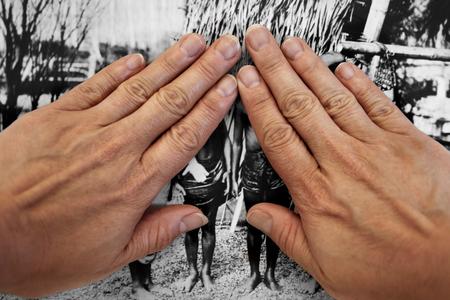Today is the 120th anniversary of Washington's statehood, but also the 20th anniversary of an experiment in marking time. In 1989, I coordinated a time capsule project for the state's Centennial celebration. What we did was something unique: created a 400-year time capsule that will be updated at 25-year intervals until it is fully opened in the year 2389, the state's 500th anniversary.
How did we plan to pull that off? We recruited over 300 children around age 10 (most with their birthdays on or near Nov. 11) to form a group of "Capsule Keepers." Their job is to watch over the time capsule and come together in 25 years to open it, update it, and seal it for the next generation of keepers.
The idea is that this multigenerational handoff creates a chain of remembrance, so the capsule won't be lost or destroyed. Losing time capsules, in turns out, is quite common, and even happened with capsules from Washington's 1953 Territorial Centennial. Second, the time capsule is a large safe, but inside are a cluster of separate, steel capsules, one for each 25-year interval. Filling these smaller capsules will provide a layered record over time, like an archaeological dig, unlike most time capsules which offer only a snapshot in time.
This was a concept aimed at creating a new model for time capsules, a phenomenon that has a fascinating past and a problematic future. The idea of making an updatable time capsule is unusual. One scholar described the Washington Centennial Time Capsule as probably the world's "first long-term serial deposit time capsule."
So 20 years ago, on Nov. 11, 1989, as a centerpiece of the Centennial celebration ceremonies, a group of 10-year-old volunteers was herded into the Capitol in Olympia and sworn in as official "Keepers of the Capsule" by then-Gov. Booth Gardner. The kids were given special t-shirts and certificates, private donations were put into an account with the Seattle Foundation to fund their future activities, and the capsule was dedicated and placed in a locked alcove behind glass in the Capitol Rotunda.
The secretary of state's office assumed responsibility for keeping track of the capsule's keepers, and has attempted to update their records with contact information over time. But outreach has been infrequent and the 10-year-olds are now 30ish. A lot has changed since they took their oaths two decades ago as the kids have grown up, gone to school, gone off to war, graduated from college, started careers and families, moved away. It's time for a new effort to get in touch with the Keepers.
The head of the Centennial, Putnam Barber, along with former Secretary of State Ralph Munro and myself, founded a nonprofit that would be the formal entity for the Keepers organization. Over the years, we have been the quiet and occasional lobby on the capsule's behalf. But it's time time to prepare for the first capsule opening and the next stage of the capsule in 2014. What will go in the next installment of the time capsule? There are also, by the way, some interesting things scheduled to be removed from the capsule as well, left there specifically for the Keepers.
The first order of business is to locate and contact the Capsule Keepers. Barber has just started a Facebook page for the organization; it's time for the secretary of state's office to update its records (their next outreach, March 2010, the first since 2002); and it's also time to put out a call for Keepers to step forward to get ready for the next phase, which is only five years away.
In filling the first time capsule in 1989, we consulted a wide range of experts, from science fiction authors to archaeologists to technologists on what we should put inside. The process of creating the capsule also involved a wide array of experts and volunteers, including engineers at Westinghouse Hanford who designed and constructed the series of capsules inside the safe that await filling in the decades and centuries ahead.
One thing that's changed since 1989 is the creation of email, the Web and electronic social media. Most of the Capsule Keeper records are on paper: Letters and postcards are hardly the modes of communication widely used today. One thing we've learned is how impermanent addresses and phone numbers are over a 20-year period in which communications technology and mobility have changed so much. Letters from various people, including some science fiction writers, were included in the first time capsule. A handwritten letter already seems antique.
So Capsule Keepers, it's time to step forward and make yourselves known so that the time capsule can take the next step into the future.
If you are a Capsule Keeper, or simply want to support the project, you can go to the Washington Capsule Keepers page on Facebook and be among the first to sign up. Also, you can email either Putnam Barber or Knute Berger with your current contact information. The secretary of state's office in Olympia maintains the official Keeper files and you can send them your updated contact information (email, phone, address), plus notify them of any name changes. Email: sam.reed@sos.wa.gov; snail mail: Secretary of State, Legislative Building, P.O. Box 40220, Olympia, WA 98504



